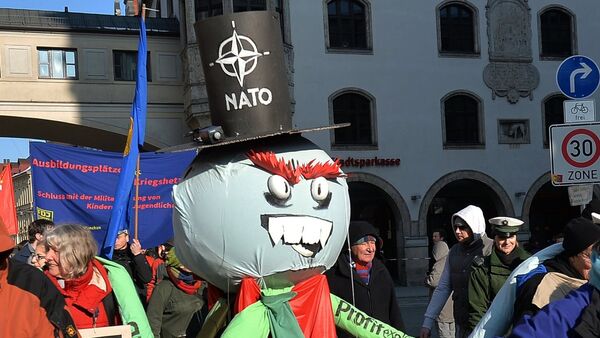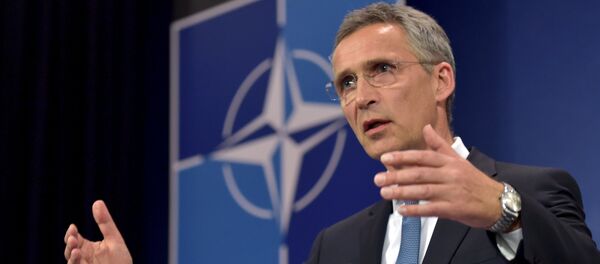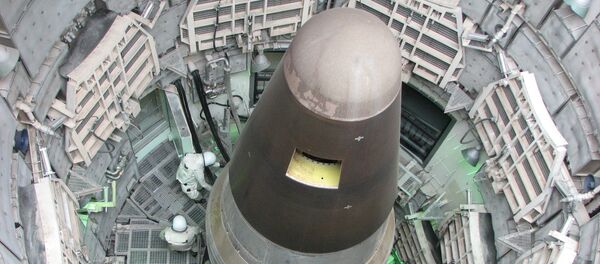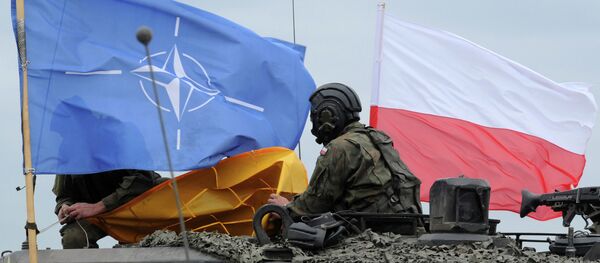Through a series of joint military exercises as well as supplies of heavy offensive weapons to its "nervous" European allies, Washington and NATO are planning to "deter" Russia's "potential aggression," British journalist and author Geoff Dyer points out.
The journalist emphasized that at the same time NATO has kicked off "a substantially increased" program of joint military exercises in the region. In particular, in recent weeks American troops have carried out their "first ever live-fire" military drills with tanks in Bulgaria, Estonia and Lithuania.
NATO's current strategy is to "protect" its allies in the east with rapid response forces which are comprised of troops from its member states.
"However there are several reasons to question the Atlantic alliance's commitment to its new self-defense mission," the author stressed, adding that "the byproduct [of NATO's new strategy] is a creeping militarization of both eastern Europe and the western relationship with Russia."
For instance, Germany's armed forces, the Bundeswehr, abolished compulsory military service and drastically diminished the number of tanks and artillery. According to some reports, the German army now possesses only one-tenth of the number of tanks it had 25 years ago.
At the same time polls show the lack of willingness to defend other NATO members from Russia's "threat" among Western citizens. After decades of peace no one is taking US-NATO propaganda campaign about "the Russian menace" seriously.
Many NATO countries reluctant to use force to defend allies against Russia http://t.co/Ejmo2NQoqM pic.twitter.com/zAlouDARim
— Pew Research Center (@pewresearch) 11 июня 2015
"The other uncomfortable trend for NATO members is the way that Eastern Europe is slowly becoming more militarized. Western officials… worry about turning NATO's eastern border into a new hardened, military frontier," Mr. Dyer underscored.
"The same is increasingly true for the relationship with Russia," he noted, adding that the West and Russia are now communicating through military signaling and "the chances of an accident that could escalate" are now greater than during the Cold War, the journalist warned.




